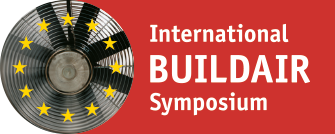Purpose of the work
If there are leaks in an airtight layer which cannot be accessed any longer, the question arises as to whether the structure is still fit for purpose, or in more pragmatic terms: "Can rework be avoided?" Rework is always extremely resource intensive, so it must be specifically required. “Moisture safety” - which is purely a matter of building physics – allows for a more detailed look at the structure. Examining the structure from a hygric point of view using the WUFI® hygrothermal software should provide an initial indication. Are there structures that manage well despite an unplanned humidity source (residual leakage), i.e. that are robust? Which structures does this not apply to? Are there clear indications as to which structures should be avoided, when bonding and sealing cannot be done in conformity with construction practice?
Method of approach
Various structures are examined using the WUFI® hygrothermal software under base assumptions of a known (estimated) leakage amount and the following influencing factors:
- Thermal lift (building height and temperature difference)
- Relative humidity within the space (water content of the air).
Simulation calculations are performed on different structures. In the first step, a determination is made regarding the point at which the structure is "moisture-sensitive" and the moisture content that occurs in this situation in the presence of a functional air barrier. The structure is then placed in various positions within the building envelope and the humidity profile is compared under real climatic conditions. Due to certain unsecured underlying data in the WUFI® software, a quantitative evaluation must be waived. The results are purely qualitative and reveal an initial tendency in moisture-resistant or moisture-sensitive structures.
Content of the contribution
Influencing factors are presented that contaminate a structure with moisture and that also must be recorded in the case of an analysis. The way in which structures respond to this moisture is also presented.
Results and assessment of their significance
Taking into account the following influencing factors:
- Natural pressure difference due to thermal effects (temperature difference and building height),
- Building material properties at the critical (cold) layer and
- Leakage amount, rugged and sensitive structures can be identified without doubt.
Conclusions
To be able to identify rework that is unjustified in terms of building physics, information must be collected on the leakage amount as well as on the material layers of the overall structure, including the material properties. An evaluation must first be done based on the information on the structure’s moisture resistance.
Note
For more information, please contact the reference author at: wilwalther@t-online.de





